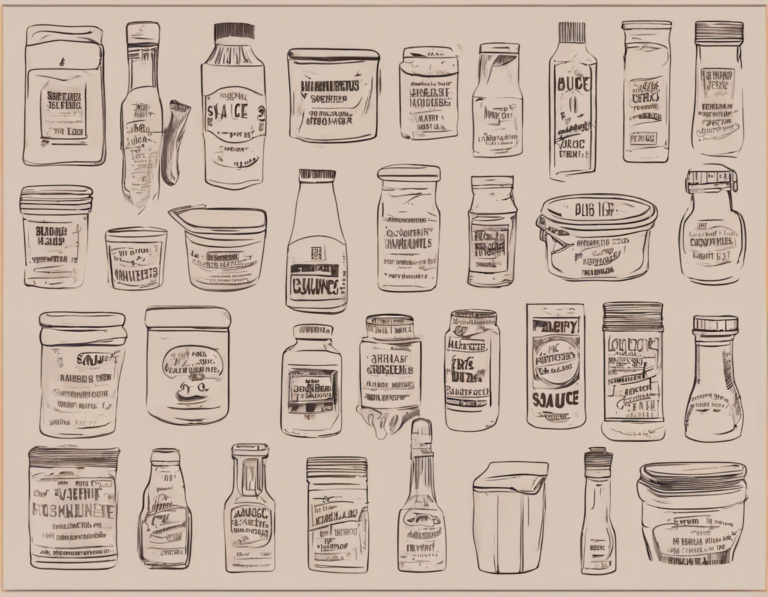
Are you looking to take your dishes to the next level? One of the most effective ways to enhance flavor and elevate a meal is through the use of sauces. Sauces not only add depth and complexity to a dish but also have the power to tie all the flavors together and make the final result truly memorable. In this comprehensive guide, we will explore the essentials of sauces and how you can use them to create culinary masterpieces in your own kitchen.
Understanding the Importance of Sauces
Sauces are an essential component of many cuisines around the world. From classic French sauces like béchamel and hollandaise to Asian staples like soy sauce and hoisin, sauces play a crucial role in enhancing the flavors of a dish. They can be used to add moisture, richness, acidity, sweetness, or spiciness, depending on the desired outcome.
Sauces are versatile and can be drizzled, poured, or used as a dipping condiment. They can be thick or thin, smooth or chunky, hot or cold – the possibilities are endless. By mastering the art of sauce-making, you can transform even the simplest of dishes into gourmet creations.
Common Types of Sauces
1. Mother Sauces
- Béchamel: A classic white sauce made with butter, flour, and milk.
- Velouté: A light sauce made from a light stock thickened with a roux.
- Espagnole: A rich brown sauce made from brown stock and brown roux.
- Hollandaise: A smooth, buttery sauce made with egg yolks, butter, and lemon juice.
- Tomato Sauce: A staple in Italian cuisine made from tomatoes, onions, and herbs.
2. Pan Sauces
- Made by deglazing a pan with wine, broth, or another liquid and reducing it to create a flavorful sauce.
- Common pan sauces include marsala, piccata, and jus.
3. Emulsified Sauces
- Sauces in which two liquids that don’t normally mix (like oil and vinegar) are combined using an emulsifier.
- Mayonnaise and vinaigrettes are popular examples of emulsified sauces.
Tips for Making Perfect Sauces
Creating a delicious sauce can be a game-changer in your culinary endeavors. Here are some essential tips to help you master the art of sauce-making:
1. Start with a Good Base
When making a sauce, always start with a good base. This could be a stock, a roux, or even just the drippings from a roasted meat. A flavorful base will give your sauce depth and complexity.
2. Build Layers of Flavor
Don’t be afraid to experiment with different herbs, spices, and aromatics to build layers of flavor in your sauce. Adding ingredients like garlic, onions, fresh herbs, and citrus zest can take your sauce to the next level.
3. Use Quality Ingredients
The quality of your ingredients will directly impact the flavor of your sauce. Use fresh herbs, spices, and good-quality stocks for the best results.
4. Don’t Rush the Reduction
Reducing a sauce helps concentrate the flavors and thicken the consistency. Take your time with this step to achieve the perfect texture and richness.
5. Season and Taste
Always remember to taste your sauce and adjust the seasoning as needed. A pinch of salt, a squeeze of lemon juice, or a dash of hot sauce can make a world of difference.
How to Pair Sauces with Different Dishes
Pairing the right sauce with your dish can take it from good to exceptional. Here are some classic pairings to consider:
1. Steak and Red Wine Reduction
The richness of a red wine reduction pairs perfectly with a juicy steak, enhancing the meaty flavors with a touch of acidity.
2. Fish and Lemon Butter Sauce
The tangy brightness of lemon butter sauce complements delicate fish dishes, adding zing and richness to every bite.
3. Pasta and Pesto
The fresh, herbaceous flavors of pesto add a burst of freshness to pasta dishes, whether tossed with vegetables or served with grilled chicken.
4. Chicken and Creamy Mushroom Sauce
Creamy mushroom sauce adds earthy umami notes to tender chicken breasts, creating a comforting and satisfying meal.
5. Tacos and Salsa Verde
The vibrant flavors of salsa verde elevate the taste of tacos, adding a spicy kick and refreshing herbal notes to each bite.
Frequently Asked Questions (FAQs)
1. Can I freeze homemade sauces?
- Yes, many sauces can be frozen for later use. Be sure to cool the sauce completely before transferring it to a freezer-safe container.
2. How long do homemade sauces last in the refrigerator?
- Most homemade sauces will last for 3-5 days in the refrigerator. Be sure to store them in airtight containers.
3. Can I thicken a sauce without using flour?
- Yes, you can thicken sauces using alternative thickeners like cornstarch, arrowroot powder, or even pureed vegetables.
4. How do I fix a sauce that is too salty?
- To fix an overly salty sauce, you can try diluting it with unsalted broth, water, or a touch of sweetness like honey or sugar.
5. What is the difference between a gravy and a sauce?
- Gravy is typically made from meat drippings and thickened with flour, while a sauce can be made from a variety of ingredients and may or may not include meat drippings.
Mastering the art of sauces can truly elevate your cooking game. Whether you’re simmering a classic French reduction or whipping up a quick pan sauce, the right sauce can turn a good meal into a great one. Experiment with different flavors, techniques, and pairings to discover your favorite sauce essentials and take your dishes to new heights.